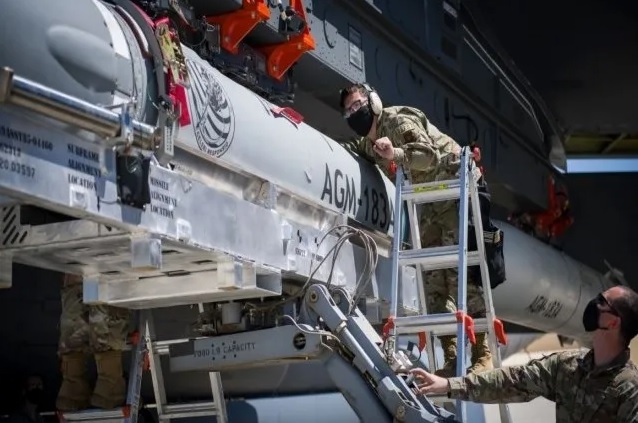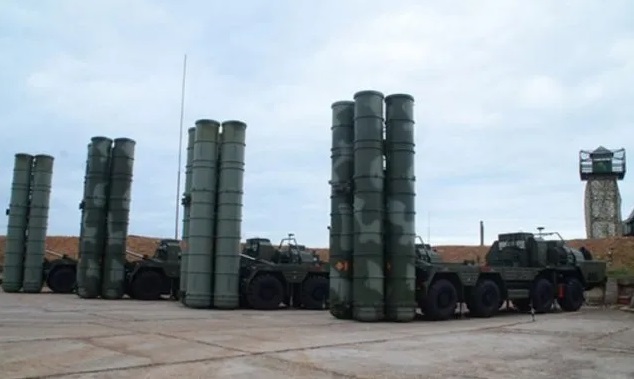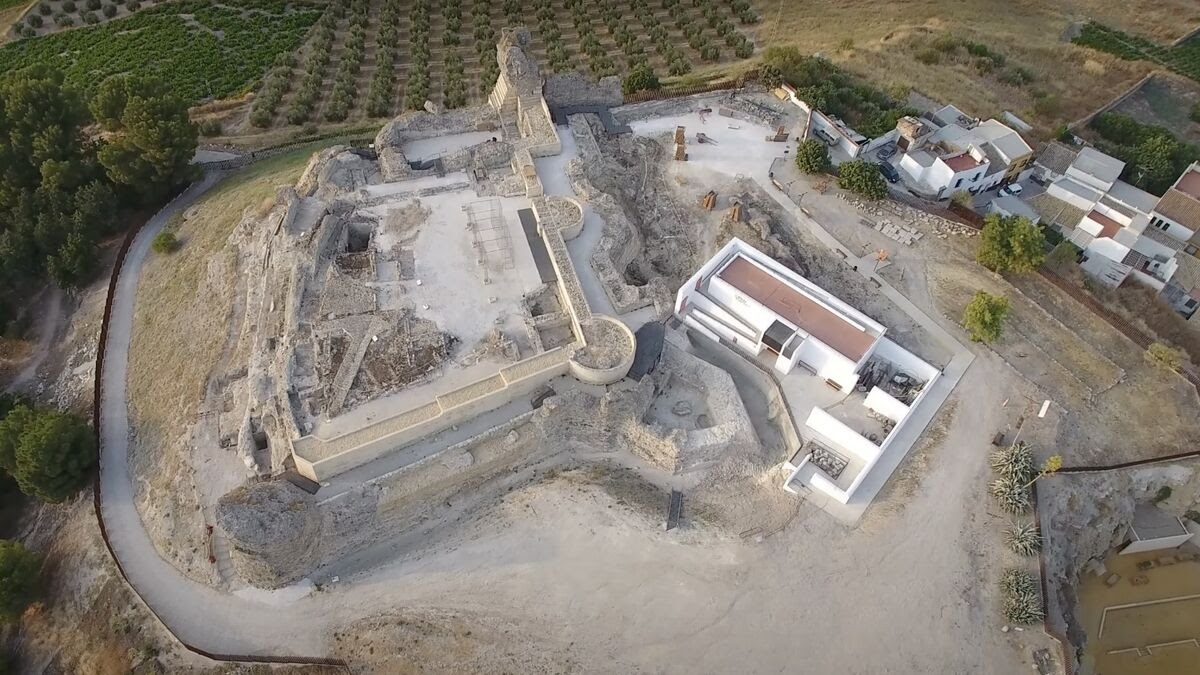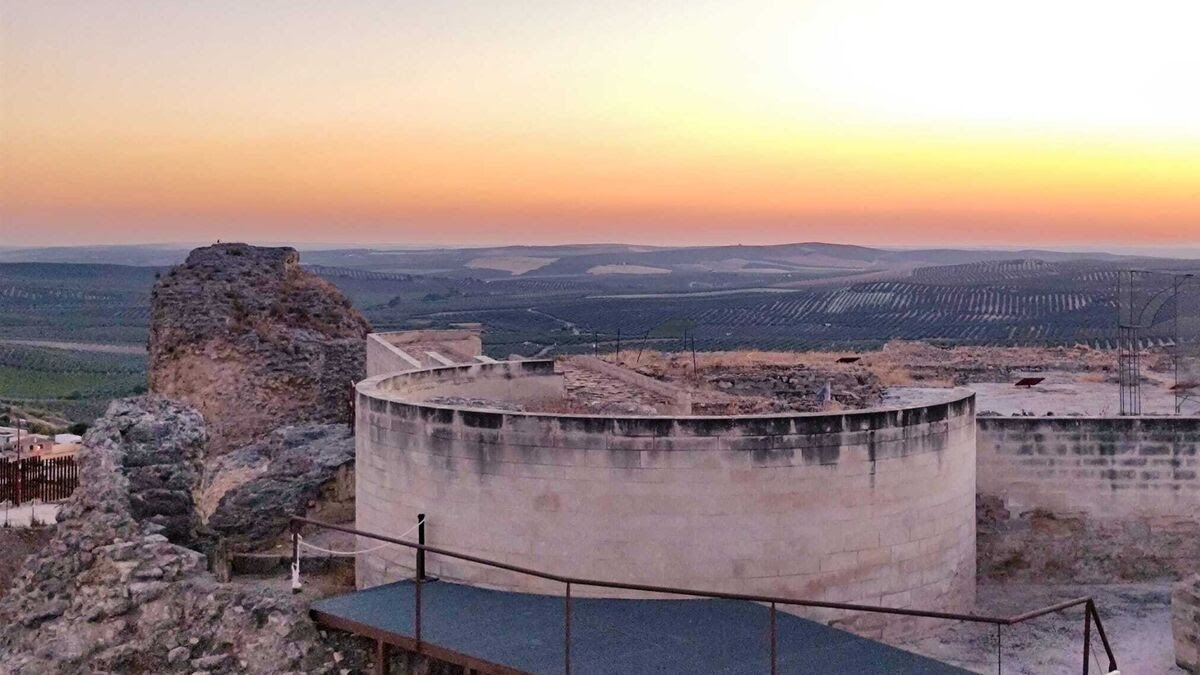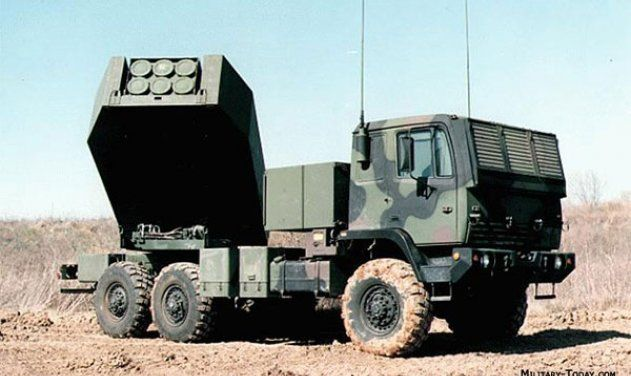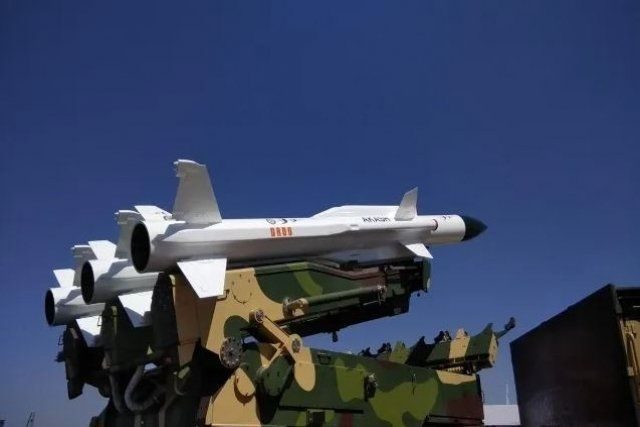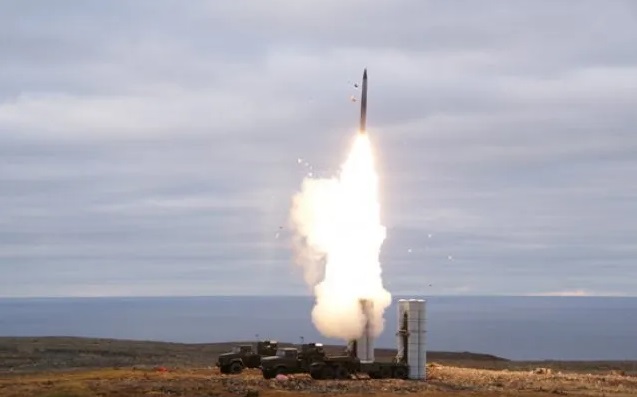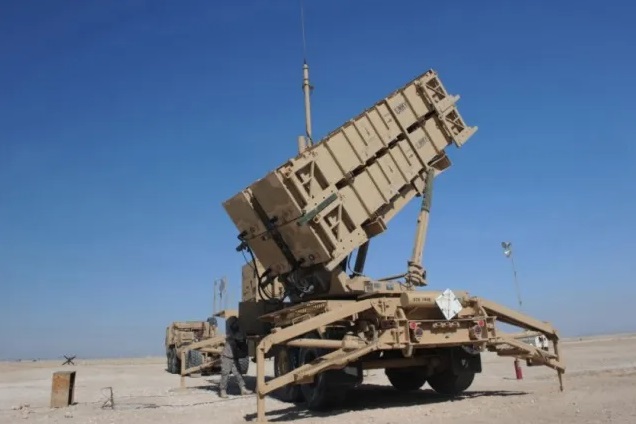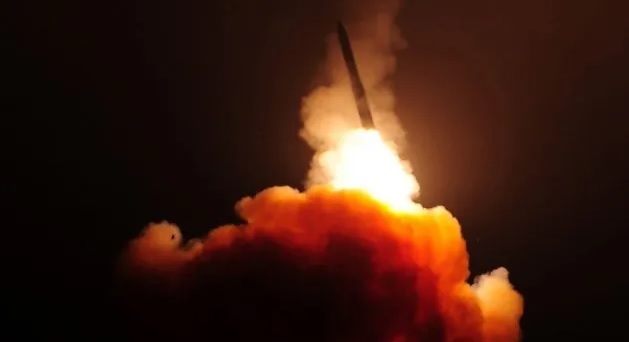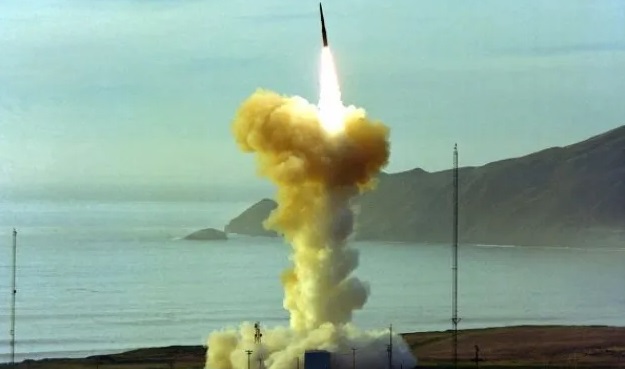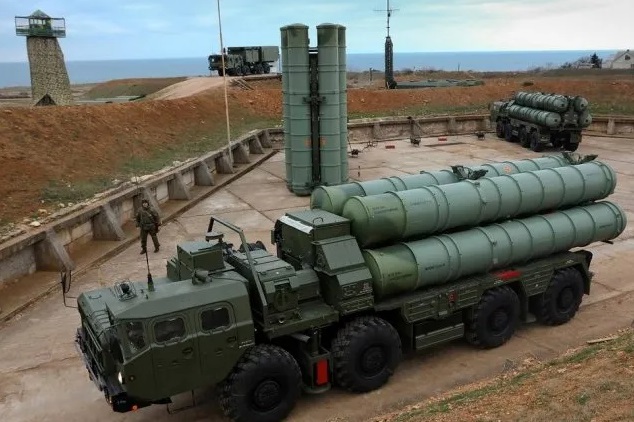
S-400 missile system. Via Russian state media.
Di Aishwatya
Rakesh
As though
Russia’s S-400 air defense system (ADS) didn’t give the West enough
heebie-jeebies, the country has come up with a more powerful ADS, the
S-500; which the Russians claim can tear down fifth-generation aircraft,
satellites in low-earth orbit (LEO) and hypersonic weapons.Russia is
gearing up to put its brand new air and missile defense system on full
combat alert. Its military will receive first of its S-500 systems
called ‘Prometheus’ in this year. Commander of Missile Defence Troops of
the Russian Aerospace Forces, Maj. Gen. Sergei Babakov, told defense
ministry-owned Krasnaya Zvezda newspaper last week that all tests of the
system had been completed.
God of fire:
In Greek
mythology, “Prometheus” was a Titan god of fire and a supreme trickster.
Russia says its God of Fire can destroy intercontinental ballistic
missiles (ICBMs), hypersonic cruise missiles packing tremendous kinetic
energy, aircraft including stealth jets and drones, and satellites in
the low Earth orbit (LEO).
According to a Pravda Report, the S-500 is unrivalled by any other
similar system in the world, being the first in a new class of
space-defense weapons.
“The S-500 is
a blow against American prestige,” Almaz-Antey head engineer Pavel
Sozinov told Russian media in mid-2020. “Our system neutralizes American
offensive weapons, and surpasses all of America’s much-hyped anti-air
and anti-missile systems.”
Can destroy hypersonic missiles, satellites in low-earth orbit:
The S-500 is
expected to have an extended range of up to 600km, an improvement of
200km over its predecessor, the S-400. The system will have the
potential to destroy hypersonic and ballistic targets with interceptors
operating at an altitude higher than 185km. In previous tests, the S-500
is said to have hit target missiles from a range of 480km, the longest
range strike by any ADS. It reportedly has a response time of about 3-4
seconds, less than half of S-400’s 9-10 seconds.
The new
system can reportedly detect and simultaneously engage up to 10
ballistic hypersonic targets flying at a speed of 5-7km/s. It also aims
at destroying hypersonic cruise missiles and other aerial targets at
speeds of higher than Mach 5, as well as spacecraft. The altitude of a
target engaged can be as high as 180–200km.
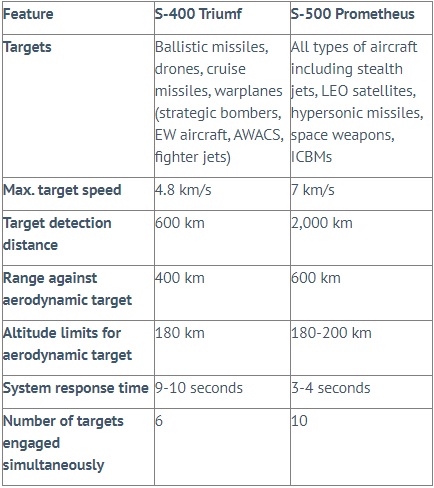
S-500 Components
The S-500
will consist of a combat command post with an automated control system (avtomatizirovannoy
sistemy upravleniya—ASU), a radar complex, including a multifunctional
“illumination” radar, and up to 12 anti-aircraft missile launchers
mounted on a Russian- or Belarusian-built chassis.
Missile
Launcher Unit: The S-500 will consist of a 77P6 Self-Propelled
Transporter Erector Launcher (TEL) based on the chassis of BAZ-69096
trucks in 10x10 configuration. The BAZ- 6909 can move at a maximum speed
of 70 kmph with a maximum cruising range of 500km.
According to
the first drawing releases on the Almaz-Antey 2015 Calendar, the S-500
TEL is equipped with two Missile Launch Tube / Transport Container
mounted at the rear of the truck chassis. In firing position, two
hydraulic jacks are lowered to the ground on each side of the truck
chassis and the missiles containers are placed at the vertical to the
rear side.
Mobility:
All battery components of the S-500 are carried on hardened BZKT
BAZ-6909 vehicles. This family of vehicles includes 6x6, 8x8, 10x10
heavy high mobility trucks, prime movers, artillery tractors, with a
payload capacity of 13-21 tonnes.
Command
and Control Vehicles: The S-500 is expected to use 91N6A(M)
acquisition and battle management radar, revised 96L6-TsP acquisition
radar, and new 76T6 multimode engagement and 77T6 anti-ballistic missile
(ABM) engagement radars. The 96L6-TsP Acquisition Radar is a direct
derivative of the 96L6-1 series used a battery acquisition radar in the
S-400. Battle management and ABM acquisition will be performed by the
91N6A(M) Big Bird Acquisition and Battle Management Radar, an evolution
of the 64N6E series, typically used to support multiple S-300P/S-400
batteries.
Two battery
command post types are listed, the 55K6MA which is clearly an evolution
of the S-400 55K6E battery command post, and the 85Zh6-2, which may
refer to a command post for an extended battery.
Missiles:
The main missile with the S-500 is reportedly the 40N6M 30-feet long,
two-stage solid fuel missile capable of reaching speeds of 9 Mach having
a blast-fragmentation warhead with a range of ~500km and 95% accuracy.
To intercept ballistic missiles and satellites, the Prometheus will use
2 new types of missiles: the 77N6-N and 77N6-N1, the first-ever
Russian-built missiles with inert warheads. Known as kinetic kill
missiles, they destroy nuclear warheads only by the force of impact – by
hitting their targets at 7km/s speed. The missiles will strike ballistic
missiles at a height of ~200km considerably minimising the impact of
their debris.
The test that
saw the S-500 hitting a target at a record 480km away reportedly used
one of these two missiles: a version of S-300V4’s long-range heavy NPO
Novator 9M82MD or the 40N6.
S-500 radar can network with multiple ground-based radars, early warning
satellites:
Russia claims
that the S-500 can shoot down a hypersonic cruise missile, such as the
U.S. military’s AGM-183 Air-Launched Rapid Response Weapon (ARRW)
hypersonic weapon is being built by Lockheed Martin.
Prometheus
can also reportedly engage stealth aircraft including F-22 Raptor, F-35
Joint Strike Fighter or any other low observable platform for that
matter. The Russians claim that the system can engage over the horizon
and can be plugged into an air defense network—to include satellites.
"The S-500
will analyze information about a possible missile attack obtained by
early warning satellites and over-the-horizon radars, such as the
Voronezh, as well as select targets, in terms of their importance, cut
off false targets at a great distance, accompany all this and finally
issue target designations to various systems,” Zvezda TV station stated.
(https://sputniknews.com/military/201704091052466018-russia-prometey-missile-system-airdefense/)
By networking
multiple high-speed long wave radars such as the RLS Voronezh-DM and
1L119 Nebo SVU, it might be possible to generate a weapons quality track
on an aircraft such as the F-22 or F-35. Sensor fusion has afforded
militaries many capabilities that are greater than the sum of their
part. This may be one such case, the National Interest (https://nationalinterest.org/blog/the-buzz/s-500-russias-super-weapon-could-kill-the-b-2-f-22-orf-
35-20107) had reported in 2019.
How will the S-500 fare against the U.S. Navy’s New Generation Jammer?
In early July
2021, the U.S. Navy awarded Raytheon a $172 million contract to start
low-rate initial production of the Next Generation Jammer Mid-Band (NGJ-MB)
to be mounted on the F/A-18G Electronic Warfare aircraft. The new jammer
is intended for offensive electronic attacks against air-defense and
communications systems.
The NGJ uses
an active electronically scanned array which allows for faster and more
precise broadcast of radio waves. "With its power and ability to jam
multiple radars simultaneously, NGJMB will fundamentally change the way
the Navy conducts airborne electronic attack," said Annabel Flores, vice
president of Raytheon Electronic Warfare Systems.
It will be
interesting to see how the S-500 fares against the NGJ-MB. Will the new
American electronic attack aircraft be able to blind its radars or does
the S-500 have an ace up its sleeve that we don’t know as yet?

